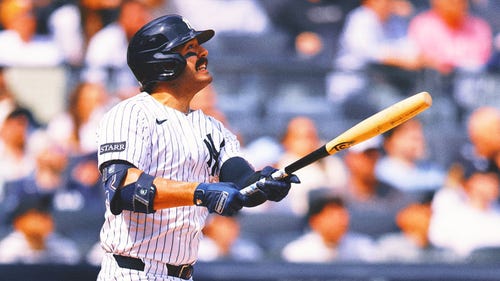
St. Louis Cardinals have been historically clutch this season
Thursday night, the Cardinals got thumped by the Reds, 11-0. Bad game. One of those games you just toss out and move on from. You might wonder what this has to do with clutch.
Conveniently, Thursday night, the Cardinals found themselves in basically zero clutch situations. For something a little more representative, consider Wednesday's game, against the Cubs. Nine outs into the game, the Cardinals trailed 3-1. From there, they yielded no more runs; from there, they scored three more, all in the bottom of the eighth. In that way, the Cardinals won a game in which they were out-hit 11-5. They won a game in which they were out-OPSed .650-.526.
The Cardinals haven't made a habit of that, exactly, but it gets at the idea. As I write this, the Cardinals have the best record in baseball, by a handful of games. Odds are pretty good they'll reach or clear 100 wins. It makes sense that they also have the best run differential in the National League. Yet, interestingly, we can also consider OPS differential. By that measure, the Cardinals rank fifth in baseball, between the Pirates and the Yankees. That's still good, obviously, but there's something going on in between those numbers and the actual team record. Something that's made the Cardinals look even stronger.
That something is clutch performance. The Cardinals have been clutch, far more clutch than any other team. It's admittedly a difficult thing to quantify. And, admittedly, there are multiple definitions of "clutch." The definition being used here is putting on a particularly good performance in pressure situations. You could think of the Cardinals as having had wonderful timing. It's lifted their record above what you'd expect.
I'd like to introduce you to a statistic we have on FanGraphs called "Clutch." Here's a link to a brief explanation, and if you want one that's briefer still, the number measures "how much better or worse a player does in high-leverage situations than he would have done in a context-neutral environment." It's a measure of timing, and while it's a little bit complicated and while the units aren't easy to explain, let's just agree to skip the gory part. There's Clutch for players, and there's Clutch for teams. For teams, there's Clutch for hitting, and there's Clutch for pitching.
Following is a plot of 2015 data. On the x-axis, batting Clutch, and on the y-axis, pitching Clutch. The Cardinals are highlighted.

Offensively speaking, the Cardinals have had better timing than average, but they've really been strong on the other side. They lead baseball in pitching Clutch, and so when you put the numbers together, they also lead baseball in overall Clutch, a couple points ahead of the Royals, and several points ahead of the Twins. This year, no team has been more clutch than the Cardinals, at least by this measure. And this has significance beyond just 2015, which is most of the way over.
See, the headline includes the word "historically." On FanGraphs, we have this data on the team level going back to 1974. That doesn't cover all of baseball, or even most of baseball, but it does cover a lot of baseball. Many decades of baseball. This season isn't yet over, but still, check out the following table of the 10 most clutch teams, overall, during the time window:

Top 10 Clutch Teams, 1974 - 2015
| Season | Team | Batting | Pitching | Total Clutch |
| 2008 | Angels | 7.3 | 7.6 | 14.9 |
| 2006 | Athletics | 4.5 | 9.0 | 13.4 |
| 2012 | Giants | 5.2 | 7.4 | 12.6 |
| 2015 | Cardinals | 2.0 | 9.6 | 11.7 |
| 2007 | Diamondbacks | 2.8 | 8.4 | 11.2 |
| 2004 | Reds | 6.3 | 4.6 | 10.9 |
| 1977 | Orioles | 6.2 | 4.5 | 10.8 |
| 1990 | White Sox | 8.1 | 2.6 | 10.7 |
| 2012 | Orioles | 1.8 | 8.8 | 10.6 |
| 1989 | Padres | 3.5 | 7.0 | 10.5 |
There are this year's Cardinals, in fourth, out of 1,168. They haven't been the most clutch team in several years -- they're still a little behind the Orioles from three years back -- but it's an impressive standing nevertheless. If things play out normally, the Cardinals will finish in fourth. If they keep up their current pace, they'll finish in second. And while right now the Cardinals are in fourth overall, they've already been the most clutch team on the mound. They could go on to lose their place, struggling in the final few weeks, but right now, if you sort by pitching Clutch, the Cardinals are No. 1 over the past few decades. This is a truly historic performance, taking place in a visible yet also subtle area.
Explaining why it's happening isn't easy. Things are weird. The how is easier. How have Cardinals pitchers been so clutch? A little over a month ago, Ben Lindbergh focused on performance with runners on base. If you want to read this article, but by a different writer, go read that. Lindbergh was trying to explain the same thing. I'm not going to look at performance with runners on base, but I am going to look at the overlapping performance in high-leverage situations. If you don't know what "high leverage" means, just think pressure. The higher the pressure, the greater the stakes, the higher the leverage. Bases loaded, tie game, ninth inning? High leverage. Bases loaded, 10-run game, ninth inning? Low leverage. Easy.
This year, in low-leverage situations, Cardinals pitchers have allowed a .731 OPS, ranking 19th.
This year, in medium-leverage situations, Cardinals pitchers have allowed a .668 OPS, ranking third.
This year, in high-leverage situations, Cardinals pitchers have allowed a .572 OPS, ranking first. First by a mile!
And again, this goes beyond just this year. That number is exceptional. Since 1974, here are the top 10 lowest OPS figures allowed by team in high-leverage situations:

Best 10 OPS Allowed, High Leverage, 1974 - 2015
| Season | Team | OPS Allowed |
| 2015 | Cardinals | 0.572 |
| 1988 | Dodgers | 0.592 |
| 2003 | Dodgers | 0.593 |
| 1988 | Athletics | 0.611 |
| 2011 | Braves | 0.615 |
| 2011 | Phillies | 0.615 |
| 2013 | Pirates | 0.616 |
| 1976 | Phillies | 0.619 |
| 2002 | Braves | 0.620 |
| 1985 | Mets | 0.621 |
We see this year's Cardinals again, in first, by a full 20 points. As yet another reminder: This number is going to change over the final few weeks, but it might not change enough to bump the Cardinals out of the lead. They've given themselves a strong advantage. There aren't really that many games left. The Cardinals have excelled in large part because when the pressure has been on their pitchers, their pitchers have performed much better than otherwise.
To some extent, the Cardinals could be making sure their better pitchers are handling more of the pressure situations. That's just smart managing. However, 20 different Cardinals pitchers have gone through at least 20 high-leverage plate appearances. Out of those, 17 have allowed a lower OPS in those situations than they have in other situations. That's a big number. Or, a big percentage. It's crazy to think about, an effect that's spread almost team-wide.
The unfortunate part, if you want to call it that, is it's hard to believe this'll keep up. Put another way, it's hard to believe the Cardinals have solved something. This is a plot of team Clutch scores, and the same teams' Clutch scores from the following season:

You're familiar with correlations? You're familiar with r-squared numbers? The r-squared for the above plot is 0.00. For team batting Clutch, year over year, it's 0.01. For team pitching Clutch, year over year, it's 0.01. There's no evidence of sustainability. What happens in one year is essentially completely un-influenced by what happened in the previous year.
But then, how much do the Cardinals really have to care about sustainability? Right now they're not thinking about 2016. They're thinking about the next few weeks and the postseason, and the clutch performance has gotten them this far. As a team, in the first half, their overall Clutch score was No. 1 in baseball. As a team, in the second half, their overall Clutch score is No. 2 in baseball. That's the only sustainability they care about, and there's no point in suggesting regression when you're less than a month from the playoffs. There's not time anymore for this to fully regress. What we have is something extraordinary, and it's almost all the way locked in.
How have the Cardinals survived and thrived despite some of the injuries they've sustained? Well, a lot has happened, and the team has played well, but the Cardinals have occupied the top spot in baseball in large part because the pitching staff has been historically clutch. It's hard to lose when you don't allow runs. It's hard to allow runs when you don't allow hits in run-scoring situations. It's not exactly a team approach to plan on, but it's a hell of a lift when you get it.




